Introducing Malacca, Malaysia
An historic Asian town with 500 years of European history
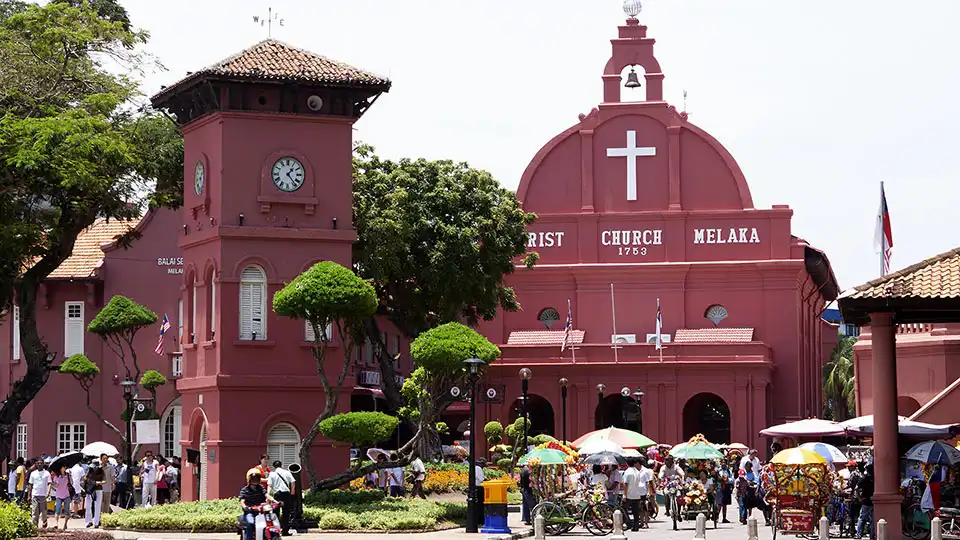
Christ Church, Malacca, Malaysia
We love Malacca. With its rich culture and fantastic food scene, Malacca embodies the deep cultural millieu of Malaysia in one compact city.
Malacca (or Melaka in the Malay language) is an historic town in southern peninsula Malaysia with over 500 years of European influence. It was also one of the first places in Malaya to trade with China.
Some History of the Malacca Region
Ancient Times
In the 7th century the maritime empire of Srivijaya, based in Palembang, Sumatra, rose to power, and its influence expanded to the Malay peninsula and Java. The empire gained effective control of two major choke points in maritime Southeast Asia: the Strait of Malacca and the Sunda Strait.
Contact between China and Malacca can be traced back to ancient times. However, the significant historical period of contact between China and Malacca began during the Ming Dynasty in the 15th century.
In 1405, Chinese Admiral Zheng He embarked on his first voyage to the western seas, which included visits to various regions, including Malacca. Zheng He's expeditions were aimed at expanding China's influence, establishing diplomatic relations, and promoting trade. These voyages played a crucial role in fostering contact between China and Malacca.
During this period, the Sultanate of Malacca was a powerful and prosperous trading port, attracting merchants from different parts of the world, including China. Chinese traders and settlers arrived in Malacca, contributing to the growth of the city's multicultural society.
The Chinese had a significant presence in Malacca, with Chinese merchants establishing their own communities and contributing to the economic development of the region. The Chinese influence in Malacca can still be seen today, particularly in the architecture, cuisine, and cultural traditions of the city.
Colonial Times
Contact between Malacca and the Portuguese began in the early 16th century. The Portuguese first arrived in Malacca in 1509 under the leadership of Admiral Diogo Lopes de Sequeira. Their initial visit was relatively peaceful, focusing on establishing trade relations with the Sultanate of Malacca.
However, tensions escalated in 1511 when the Portuguese, led by Afonso de Albuquerque, launched a military assault on Malacca. After a fierce battle, the Portuguese successfully captured the city, marking the beginning of Portuguese control over Malacca.
The Portuguese occupation of Malacca lasted for about 130 years, from 1511 to 1641. During this period, Malacca became an important Portuguese trading post and a strategic stronghold for their maritime empire. The Portuguese introduced their administrative system, constructed fortifications, and left a lasting influence on the city's architecture and culture.
The Portuguese presence in Malacca also had a significant impact on the region's trade patterns and interactions with other European powers. Their control over the Strait of Malacca allowed them to dominate the lucrative spice trade and establish a monopoly over key trading routes.
In 1641, the Dutch successfully ousted the Portuguese and took control of Malacca, marking the end of the Portuguese era in the city. However, the Portuguese legacy can still be seen in the historical landmarks, such as the A Famosa fortress, and in the cultural and culinary traditions of Malacca.
After the Portuguese era, the Dutch East India Company (VOC) took control of Malacca in 1641. The Dutch aimed to establish a stronghold in the region and secure their dominance in the lucrative spice trade. Under Dutch rule, Malacca became an important center of trade and commerce.
During the Dutch period, Malacca experienced significant changes. The Dutch introduced a system of governance and implemented policies to promote their economic interests. They built a new fortification known as the Stadthuys, which served as the governor's residence and administrative center. The Stadthuys is now a well-known historical landmark in Malacca.
Under Dutch rule, the city prospered as a trading port. The Dutch promoted the cultivation of spices, especially nutmeg and mace, in the neighboring Indonesian islands and facilitated their export through Malacca. The city became a crucial hub for the spice trade, attracting merchants from various parts of the world.
However, the Dutch administration was not without challenges. They faced resistance from local rulers and regional powers, such as the Sultanate of Johor. Additionally, piracy was prevalent in the region, posing a threat to maritime trade.
In the late 18th century, the influence of the Dutch in Malacca started to decline. The British East India Company gradually gained control over various territories in Southeast Asia, including Penang and Singapore, which provided them with strategic advantages.
In 1824, as part of the Anglo-Dutch Treaty, the Dutch ceded Malacca to the British. The British colonial era in Malacca began, lasting until Malaysia's independence in 1957.
During the British period, Malacca underwent further development and modernization. The British introduced infrastructure projects, such as railways and roads, and expanded the city's educational and administrative institutions.
Today, Malacca's rich history is reflected in its architecture, cultural heritage, and diverse communities. The city's historical sites, including the Dutch Square, Christ Church, and the Stadthuys, attract tourists from around the world, offering glimpses into its colonial past and multicultural heritage.
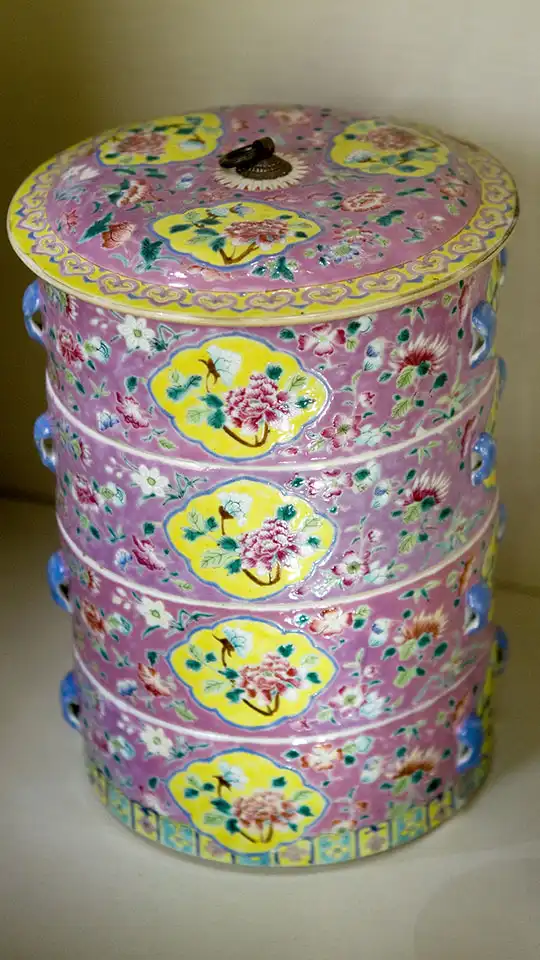
Nyonya ceramic piece
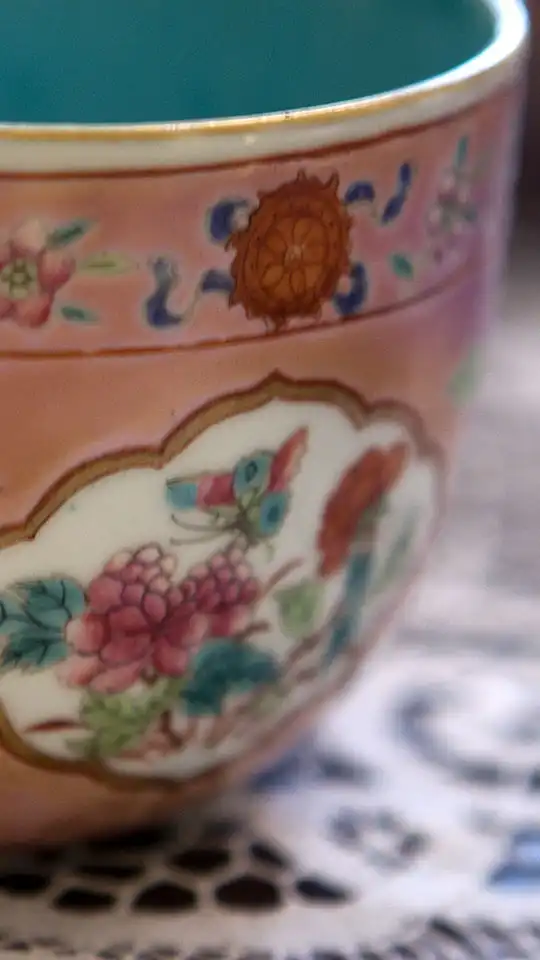
Detail of a Nyonya ceramic teac cup
About the Area
Location of Malacca in South–Asia
Malacca's strategic location has played a significant role throughout its history. Situated on the narrowest point of the Malacca Strait, the city holds a crucial position along one of the busiest and most important maritime trade routes in the world.
The Malacca Strait connects the Indian Ocean with the South China Sea, linking Europe, the Middle East, and Africa with East Asia. Its location has made it a vital shipping route for centuries, enabling the transportation of goods, including spices, textiles, ceramics, and precious metals, between different regions.
The strategic importance of Malacca's location was recognized by various empires and trading powers. The city served as a meeting point for traders from Europe, the Middle East, China, India, and Southeast Asia. It facilitated the exchange of goods, ideas, and cultures, making it a melting pot of different civilizations.
Controlling Malacca meant gaining dominance over the lucrative trade that passed through the strait. This led to intense competition between empires and trading nations throughout history. The Portuguese, Dutch, British, and other powers sought to establish control over Malacca to secure their economic interests and maintain a stronghold in the region.
Additionally, Malacca's location provided advantages in terms of defense and security. The city's natural harbor offered shelter for ships, while its position allowed for monitoring and controlling maritime activities in the strait. This made Malacca an attractive location for establishing fortifications and naval bases, enhancing the military capabilities of colonial powers.
The strategic significance of Malacca's location continues to be relevant in the modern era. The Malacca Strait remains a vital international shipping route, with thousands of vessels passing through it every year. It is an essential conduit for global trade, connecting major ports and facilitating the transportation of goods and energy resources.
Malacca's strategic location at the crossroads of major trade routes has been a defining factor in its history, shaping its development as a cosmopolitan city and a center of trade and cultural exchange.
The geographic coordinates of Malacca are approximately 2.19° N latitude and 102.25° E longitude. This location is in the equatorial climatic zone which means the temperatures are relatively even (and hot) throughout the year.
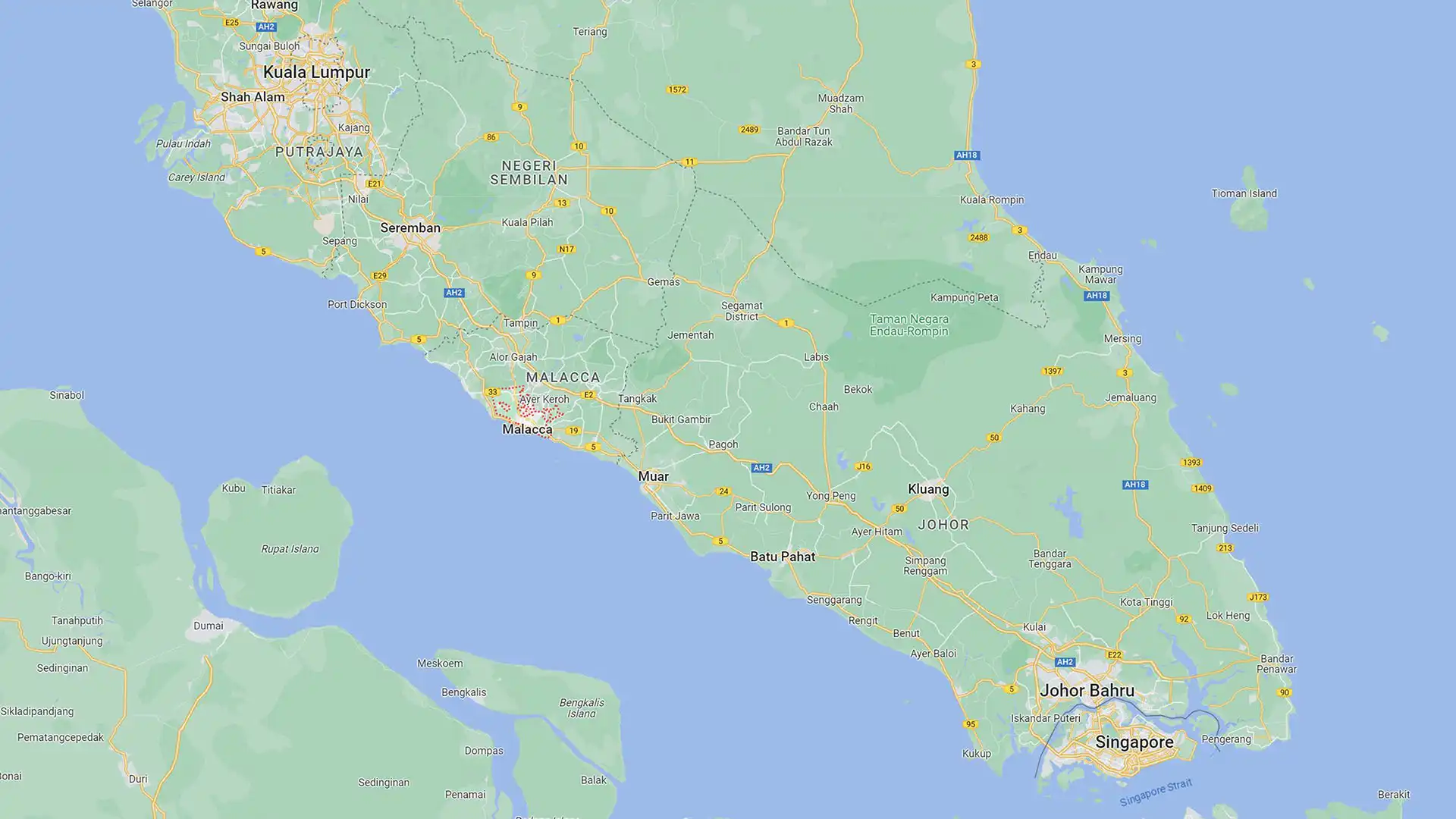
Malacca holds a strategic position on the Malacca Strait, one of the world's busiest waterways
The People
Malacca is renowned for its rich cultural mix, resulting from centuries of interaction and exchange among different ethnic groups and civilizations. The city's multicultural heritage is a testament to its historical importance as a trading port and melting pot of diverse cultures. Here are some of the key cultural influences found in Malacca:
-
Malay Culture: The local Malay community preserves its traditions, language, and customs, including traditional music, dance forms like the Joget, and traditional attire such as the Baju Kurung. Malay traditional music and dance are vibrant and expressive forms of artistic expression. The traditional musical ensemble called "Gamelan" comprises various percussion and melodic instruments. Traditional dances like Joget and Zapin are performed during cultural festivals and special occasions.Malay culture is marked by colorful festivals and celebrations. Hari Raya Aidilfitri (Eid al-Fitr) is the most significant festival, celebrated at the end of Ramadan. During this festive period, Malay families gather to seek forgiveness, exchange gifts, and enjoy traditional Malay delicacies.
-
Chinese Influence: The Chinese community has a significant presence in Malacca. Chinese culture is visible in the vibrant Chinese temples, the practice of Chinese festivals like Lunar New Year, and the influence on local cuisine, such as Nyonya cuisine.Chinese cuisine has greatly influenced the culinary scene in Malacca. Local Chinese restaurants and food stalls offer a wide array of dishes, ranging from Cantonese and Hokkien cuisine to Teochew and Hakka specialties. Popular dishes include Bak Kut Teh (herbal pork rib soup), Hainanese chicken rice, Char Kway Teow (fried flat rice noodles), and Dim Sum
-
Peranakan/Nyonya Culture: The Peranakan or Nyonya culture (also known as Straits Chinese culture) is a unique blend of Chinese and Malay heritage. Peranakan culture is characterized by its cuisine, language (Baba Malay), clothing (Nyonya kebaya), and elaborate traditional wedding ceremonies.Peranakan Nyonya houses, known as Rumah Baba, showcase distinctive architectural features. These houses are typically adorned with ornate carvings, colorful tiles, and intricate woodwork. The interior is often decorated with intricately patterned ceramic tiles, antique furniture, and traditional Peranakan artifacts.
-
Portuguese Influence: The Portuguese occupation left a lasting impact on Malacca's culture. The Kristang community, with Portuguese heritage, preserves Portuguese-inspired traditions, language, and cuisine, creating a distinctive cultural blend.The Portuguese influence on the local culture can be seen in certain traditions and customs. For example, the Portuguese Eurasian community in Malacca, known as the Kristang, has preserved elements of Portuguese language, music, dance, and culinary traditions. They celebrate cultural festivals such as San Pedro's Feast and Christmas in a distinct Portuguese style
-
Dutch Legacy: The Dutch rule in Malacca left its mark on the city's cultural landscape. Some architectural structures and remnants from the Dutch period, such as the Stadthuys, reflect this influence.The Dutch influence in Malacca has left a lasting impact on the city's architecture, administrative system, culture, and economy. Today, it adds to the diverse heritage of Malacca and serves as a reminder of the city's colonial history. Visitors to Malacca can explore Dutch-era landmarks, learn about the Dutch influence in museums, and appreciate the architectural contributions made during the Dutch colonial period
-
Islamic Heritage: Islam is the predominant religion in Malacca, and Islamic culture is deeply ingrained in the community. Mosques, Islamic schools, and Islamic traditions shape the cultural fabric of the city.Islamic cultural practices are an integral part of the daily lives of the Muslim community in Malacca. From religious festivals to Islamic customs, these practices shape the local culture. Eid al-Fitr, the festival marking the end of Ramadan, is celebrated with great joy and enthusiasm. Other significant Islamic events, such as Maulidur Rasul (Prophet Muhammad's birthday) and Hari Raya Haji (Festival of Sacrifice), are observed and celebrated by Muslims in Malacca
-
British Influence: The British colonial period introduced certain influences, such as administrative systems and the promotion of English language education.The British colonization led to the widespread use and influence of the English language in Malacca. English became the language of administration, commerce, and education. Today, English remains widely spoken and taught in schools, contributing to Malacca's multilingual environment.
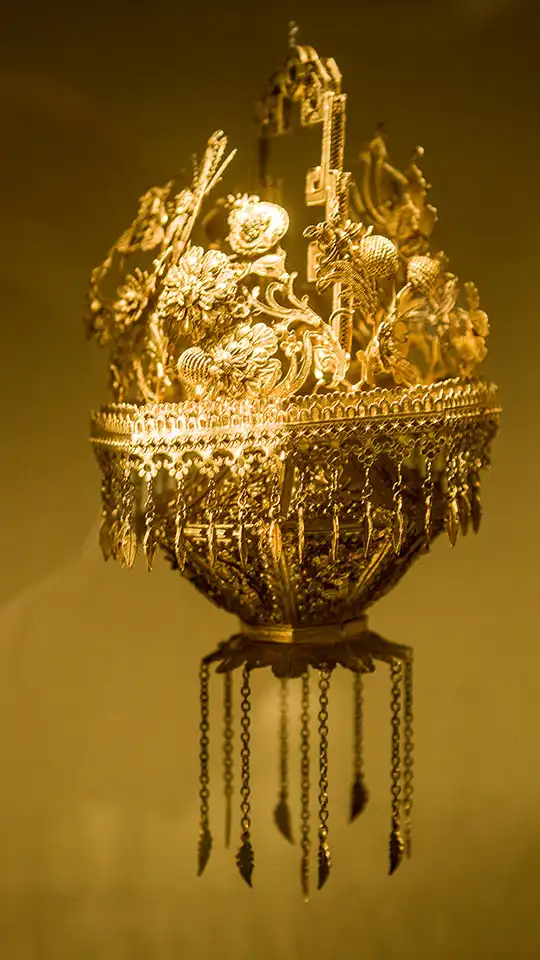
Detailed Nonya gold ornamental piece
Things to Do in Malacca
- Explore Jonker Street: Stroll along this vibrant street filled with shops, boutiques, antique stores, and local eateries. Don't miss the Jonker Walk Night Market on weekends.
- Visit A Famosa: Discover the iconic ruins of A Famosa, a Portuguese fortress dating back to the 16th century, and explore the surrounding area, including St. Paul's Church.
- Explore Malacca River:Take a leisurely boat ride along the Malacca River to admire the city's picturesque scenery and historical landmarks.
- Visit the Stadthuys and Dutch Square: Explore the Stadthuys, a red colonial Dutch building, and the adjacent Dutch Square, home to Christ Church and the Queen Victoria Fountain.
- Explore Malacca Sultanate Palace Museum: Step back in time at this museum, a replica of the original 15th-century Sultan's palace, to learn about Malacca's history and culture.
- Experience Baba-Nyonya Heritage: Visit the Baba-Nyonya Heritage Museum to learn about the unique Peranakan culture, characterized by its distinctive cuisine, clothing, and customs.
- Discover Cheng Hoon Teng Temple: Explore the oldest functioning Chinese temple in Malaysia, known for its ornate architecture and intricate wood carvings.
- Visit the Maritime Museum: Explore the Maritime Museum housed within a replica of the Portuguese ship Flor de la Mar, and learn about Malacca's maritime history.
- Enjoy Malacca's Cuisine: Indulge in a culinary journey by sampling local delicacies, including Nyonya cuisine, satay celup, chicken rice balls, and cendol, a traditional dessert.
- Visit Melaka Wonderland Theme Park: For some family fun, head to this water theme park featuring thrilling slides, wave pools, and water-based attractions.
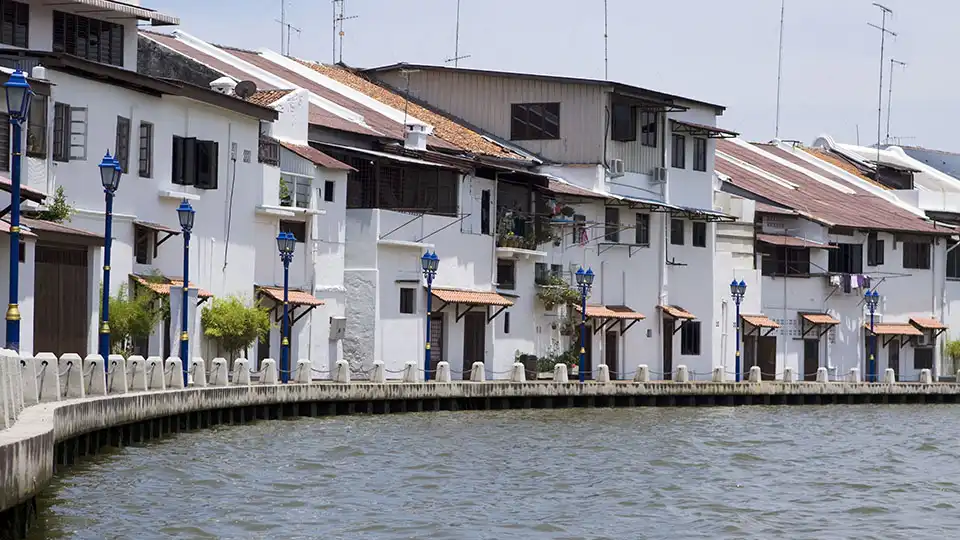
It is possible to take a tour of the canals in Malacca
Malacca Cuisine
Malaysia generally has fantastic food! With the myriad of diffirent cultural influences including European, Arab, Chinese, Indian and more, Malaysia has some of the most diverse cuisine on the planet. Malacca is no exception and time spent exploring food in Malacca will pay dividends
What to Eat
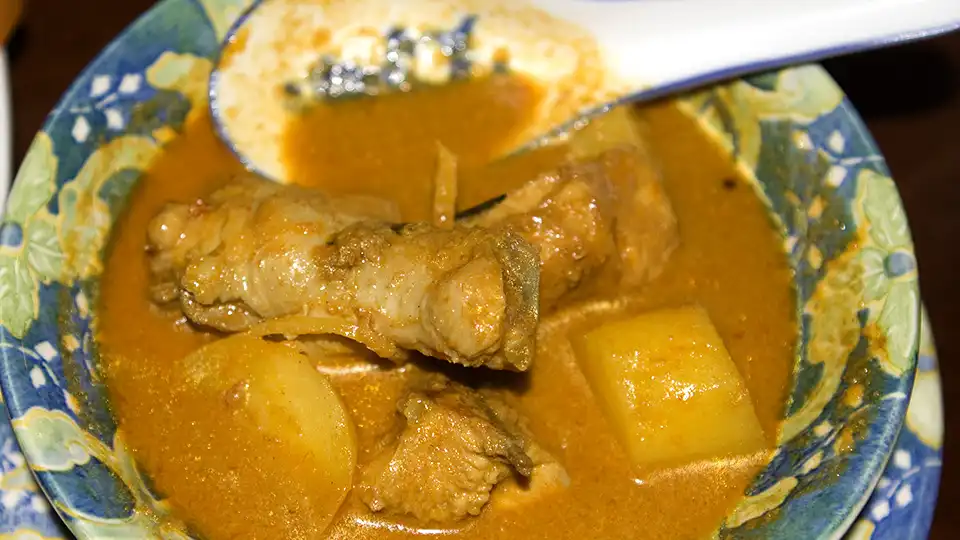
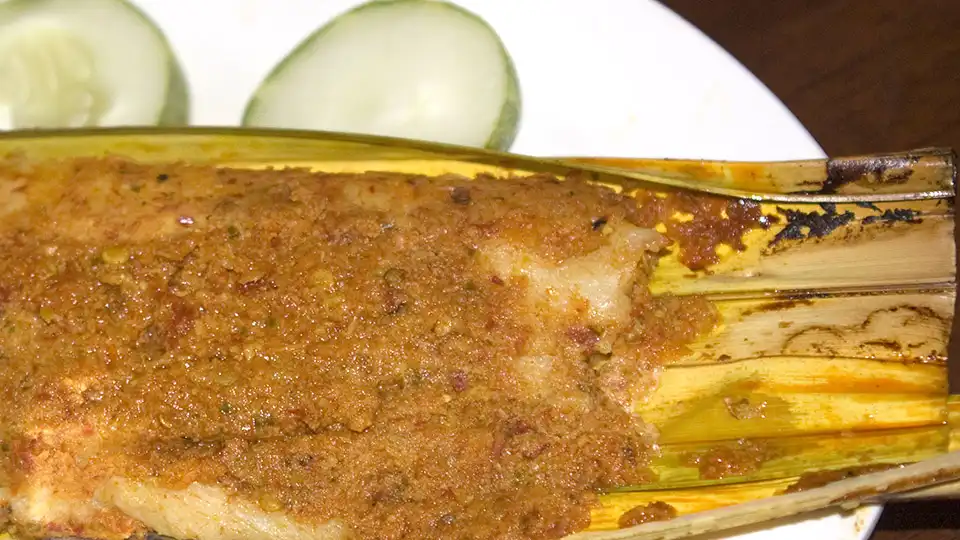
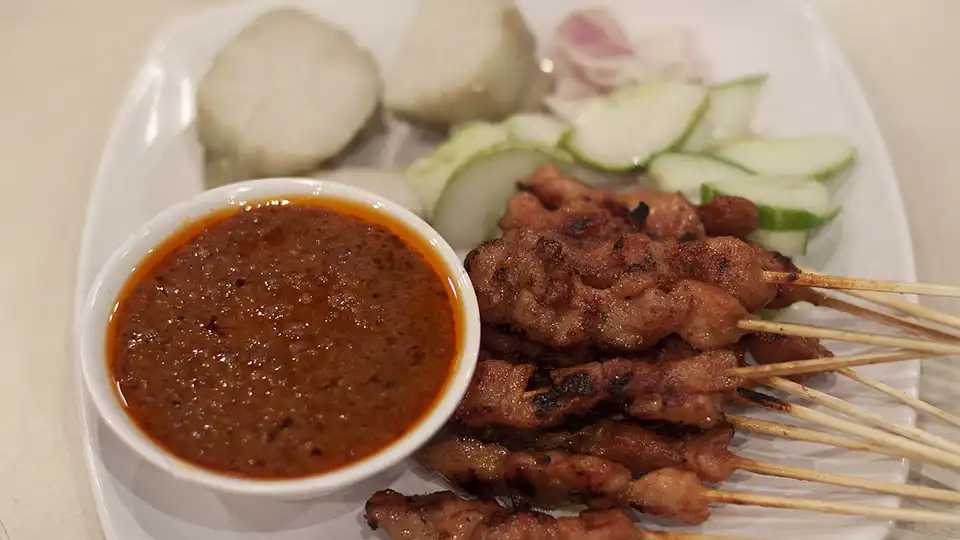
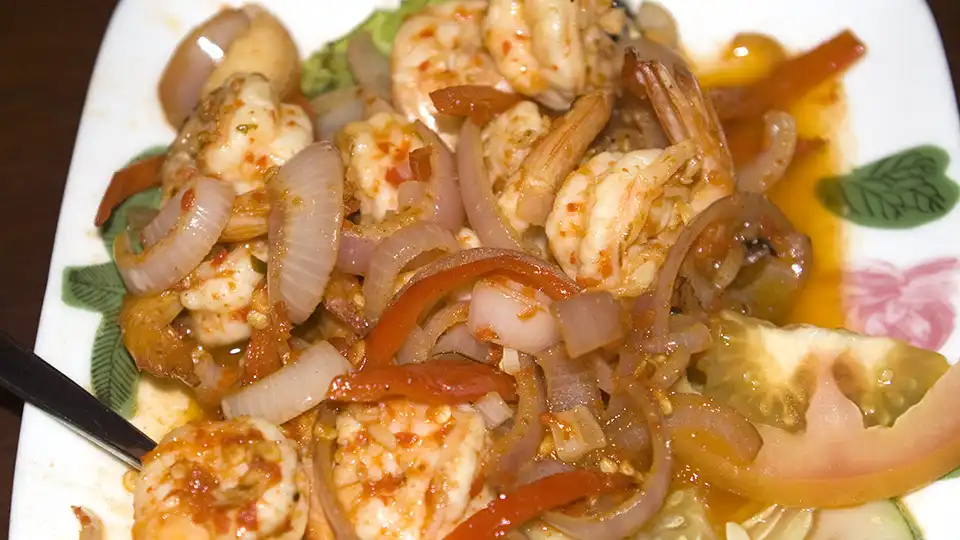
Clockwise from top left – Chicken Curry, Otak Otak, Chilli Prawns & Chicken Satay
Places to Stay
Top–Rated Hotels
Malacca offers a wide range of accomodation options. Here are 5 top–rated hotels:
- The Majestic Malacca: Located in the heart of Malacca, The Majestic Malacca offers luxurious accommodations with a blend of colonial charm and modern elegance. The hotel features spacious rooms, a spa, a swimming pool, and multiple dining options. It is known for its impeccable service and attention to detail.
- Casa del Rio Melaka: Situated along the Melaka River, Casa del Rio Melaka offers a luxurious waterfront retreat. The hotel boasts well-appointed rooms with stylish decor, a rooftop infinity pool, a spa, and various dining options. Guests can enjoy scenic river views and easy access to Malacca's historical attractions.
- Hatten Hotel Melaka: Located within the Hatten City complex, Hatten Hotel Melaka offers contemporary and stylish accommodations. The hotel features spacious rooms, a rooftop pool, a fitness center, and several dining options. Its central location provides convenient access to shopping malls and popular tourist spots.
- The Rucksack Caratel: Situated in the heart of Malacca's UNESCO World Heritage Site, The Rucksack Caratel offers a unique boutique hotel experience. The hotel features individually themed rooms with artistic designs, a rooftop bar, and a garden courtyard. It provides a cozy and trendy atmosphere for travelers seeking a memorable stay.
- The Pines Melaka: Nestled within the tranquil surroundings of a residential neighborhood, The Pines Melaka offers modern and luxurious accommodations. The hotel boasts spacious rooms, a rooftop swimming pool, a spa, and multiple dining options. It provides a serene retreat while still being close to Malacca's major attractions.
Mid–Tier Hotels
Here are some examples of well–regarded mid–range hotels in Malacca. These mid-range hotels offer a balance between comfort, affordability, and convenient locations, making them popular choices among travelers visiting Malacca. As always, it's advisable to check the latest reviews and availability before making a booking:
- Novotel Melaka: Located in the heart of Malacca City, Novotel Melaka offers comfortable and contemporary accommodations. The hotel features spacious rooms, a rooftop pool, a fitness center, and a variety of dining options. It is conveniently situated near popular attractions and shopping areas.
- Hotel Puri Melaka: Situated within a beautifully restored Peranakan-style mansion, Hotel Puri Melaka provides a unique and charming experience. The hotel offers comfortable rooms adorned with traditional decor, a courtyard garden, and a cozy library. Guests can immerse themselves in the rich cultural heritage of Malacca while enjoying warm hospitality.
- Estadia Hotel: Located in the Jonker Street area, Estadia Hotel offers modern and stylish accommodations. The hotel features contemporary rooms, a rooftop garden, a restaurant, and a spa. It is within walking distance to Jonker Street's vibrant night market and the city's historical sites.
- The Settlement Hotel: Housed in a converted 1960s government building, The Settlement Hotel blends modern comfort with nostalgic charm. The hotel offers well-appointed rooms, a courtyard garden, a swimming pool, and a restaurant. It is situated near Malacca's heritage sites and is known for its friendly staff and cozy ambiance.
- Imperial Heritage Melaka: Situated in the heart of Malacca City, Imperial Heritage Melaka provides comfortable accommodations at an affordable price. The hotel features clean and cozy rooms, a rooftop pool, and a restaurant. It offers a convenient location for exploring the city's attractions, including Jonker Street and historical landmarks.
You can use our search tool above to search for hotels in the Malacca area
Getting There & Getting Away
Malacca is not a major tansport hub, so most of the options to get there are overland. There are sometimes flights to and from Penang, and also sometimes to Pekanbaru in Indonesia. Not even Air Asia flies to Malacca, which shows how insignificant air trasnport is
Here are the options for getting to Malacca:
- By Car: If you have access to a car or prefer driving, taking a car to Malacca is a convenient option. The city is well-connected by highways, and the journey from Kuala Lumpur usually takes around 1.5 to 2 hours, depending on traffic conditions. From Singapore, the drive can take around 3 to 4 hours, again depending on traffic.
- By Bus: There are regular bus services from various cities in Malaysia, including Kuala Lumpur, Singapore, and Johor Bahru, to Malacca. Several bus companies operate on these routes, offering comfortable and affordable transportation options. The duration of the bus journey depends on the distance traveled and traffic conditions.
- Train: Malacca does not have its own train station, so the nearest train station is in Tampin, which is about 35 kilometers away. From Tampin, you can take a taxi or a local bus to reach Malacca. Trains are a popular choice for travelers coming from Kuala Lumpur or other parts of Malaysia.
- By Private Transfer: If you prefer a more comfortable and hassle-free option, you can arrange for a private transfer or hire a taxi to take you directly to Malacca from your starting point. This option offers convenience and flexibility, especially if you have specific timing requirements or prefer a more personalized service.
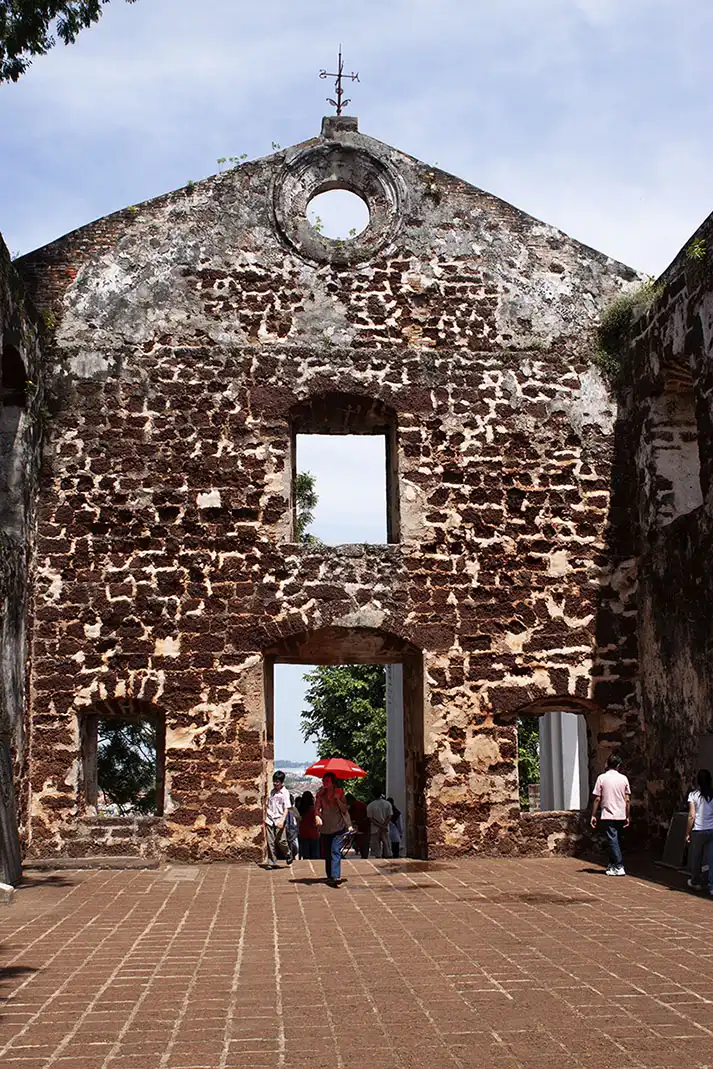
The edifice of St Pauls Church in Malacca. The original church was started in 1521AD by the Portuguese
Practical Considerations
Emergency Contacts
In case of an emergency in Malacca (or anywhere in Malaysia) you can contact the following services:
- Police - Emergency number: 999
- Fire Department - Emergency number: 999
- Tourist Police - Phone: 999
- Emergency Medical Services - Phone: 999
It's a good idea to have these numbers saved in your phone or written down in case of an emergency. Additionally, if you're traveling to Malacca as a tourist, you can also contact your embassy or consulate in Malaysia for assistance in case of an emergency.
Popular Apps in Malaysia
Some popular and usefus apps for your smartphone include:
- Grab You can essentially grab everything with the app, from rides, food, and groceries to home services, Grab is without a doubt the most well-known and comprehensive super app in Malaysia
- AirAsia The top no-frills airline in Southeast Asia is redefining itself to become ‘The Asean Super App’ AirAsia started other services during the pandemic
- Boost Retail, food and beverage, grocery, services, and other businesses are represented in the marketplace of the hybrid Boost app
Summary
Malacca, also known as Melaka, is a captivating city in Malaysia that offers a rich blend of history, culture, and vibrant attractions. As a UNESCO World Heritage Site, it is renowned for its well-preserved historical buildings, colonial architecture, and a unique fusion of diverse cultures.
History comes alive in Malacca as visitors explore its iconic landmarks, including the red-brick A Famosa fortress, St. Paul's Church, and the Dutch Square with its distinctive red buildings. The Baba-Nyonya Heritage Museum provides a glimpse into the Peranakan culture, showcasing their traditions, customs, and artifacts.
The city's multicultural character is evident in its diverse culinary scene. From mouthwatering Nyonya cuisine to savory street food, Malacca offers a gastronomic adventure. Jonker Street, the bustling heart of the city, is famous for its night market, where visitors can savor local delicacies, shop for unique souvenirs, and experience the vibrant atmosphere.
Malacca's scenic riverfront is a must-visit, offering picturesque views and boat cruises that showcase the city's beauty from a different perspective. The Maritime Museum takes visitors on a journey through Malacca's maritime history, while the Malacca Sultanate Palace Museum offers insights into the region's royal heritage.
For those seeking a spiritual experience, the Cheng Hoon Teng Temple, Kampung Kling Mosque, and Sri Poyyatha Vinayagar Moorthi Temple provide a glimpse into the city's religious diversity.
With its fascinating blend of history, culture, and culinary delights, Malacca is a captivating destination that offers a truly enriching experience for tourists. Whether exploring its historical sites, indulging in local flavors, or immersing oneself in its vibrant atmosphere, Malacca promises a memorable and rewarding journey.
Copyright © 2025 travel-with-mark.com. All rights reserved. No part of this website or any of its contents may be reproduced, copied, modified or adapted, without the prior written consent of the owner, unless otherwise indicated for stand-alone materials. Unauthorized use is strictly prohibited. All trademarks, service marks, and trade names used in this website are the property of their respective owners and are used for identification purposes only. Your access to and use of this website is subject to our terms and conditions. Details of our privacy practices may be found in our privacy notices